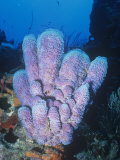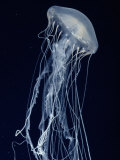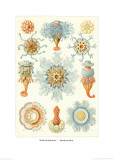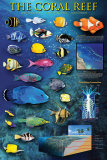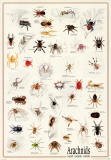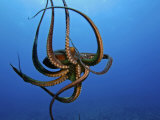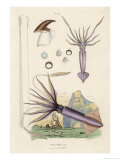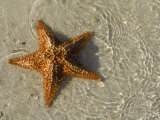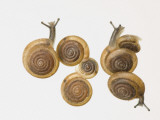|
|
|
|
|
|
|
|
|
|
|
|
BOOKS ABOUT INVERTEBRATES
|
|
|
|
|
|
|
|
|
|
|
|
|
|
|
|
 |
|
|
|
Invertebrates Posters, Prints & Charts
for the elementary and science classrooms, home schoolers, and as theme decor.
|
science > biology > zoology > INVERTEBRATES POSTERS
|
|
Invertebrates, animals that do not have a backbone, are cold-blooded, meaning their body temperature depends on the temperature of their environment.
Invertebrates range from very simple animals, like amoeba, to sponges, jellyfish, corals, insects, arachnids (spiders), crustaceans, mollusks, and echinoderms (spiny-skinned).
Animals with a backbone are called vertebrates.
|
|
Crusteceans are arthropods - invertebrate animals having an exoskeleton (external skeleton), a segmented body, and jointed appendages that include such familiar animals as crabs, lobsters, crayfish, shrimp, krill and barnacles.
• more crustacean posters
|
|
|
|
Mollusks soft-bodied, invertebrate animals that live in marine, freshwater and terrestrial habitats, with a wide range of anatomical structure, size, and behavior.
Mollusk includes snails, clams, mussels, oysters, octopus and sea slugs.
• more mollusks posters
|
|
|
|
Sponges are animals of the phylum Porifera, meaning “pore bearer”, whose bodies consist of jelly-like mesohyl sandwiched between two thin layers of cells.
Sponges do not have nervous, digestive or circulatory systems, and most rely on maintaining a constant water flow through their bodies to obtain food.
Sponges, and their symbionts, have medicinal potential that may be used to control viruses, bacteria, tumors and fungi, as well as being unique in having some specialized cells that can transform into other types.
Several species of sponges have soft, fibrous skeletons that have been used for millinea for various purposes by humans - such as padding, portable drinking utensils, for cleaning, and as applicators. In 1997 female dolphins in Shark Bay, Western Australia, have been observed attaching a marine sponge to their “nose” (rostrom L. for beak) to protect themselves when scouring the sandy bottom for food, and teaching their offspring to use the sponge.
Over-harvesting of sea sponges lead to near extinction in the mid 20th century and natural sponges have been replaced by synthetic sponges of cellulose, polyurethane or silicone, foam for many purposes.
FYI - Luffa, or loofah, are the fibrous “skeleton” of a gourd.
|
|
|
|
Jellyfish are free-swimming animals with a basic body structure that resembles an umbrella made of mesoglea, a non-living jelly-like substance, sandwiched between two layers of epithelium.
Jellyfish do not have specialized digestive, nervous, respiratory, or circulatory systems: nutrients are absorbed in the gastrodermal lining, they have a nerve net, their skin is thin enough that the body is oxygenated by diffusion, and they move through contraction-pulsations of the bell-like body.
All jellyfish are embodied in the Medusozoa subphylum and Medusa is another word for adult jellyfish. The collective names for a group of jellyfish are smack, bloom and swarm.
Touching or being touched by a jellyfish can be very uncomfortable, sometimes requiring medical assistance; sting effects range from no effect to extreme pain to death. The animated movie Finding Nemo shows the near fatal effects of swimming through a jellyfish bloom.
The tenacles of a jellyfish are reminimscient of the Greek Gorgon, Medusa, with her tangle of snakes for hair, and the ability to kill by just looking at you.
|
|
|
|
Corals are marine animals that typically live in compact colonies of many identical individual “polyps” which secrete calcium carbonate to form a hard skeleton. A coral reef is an underwater structure made from the calcium carbonate secreted by corals. Reefs grow best in warm, shallow, clear, sunny and agitated waters.
Coral reefs are called “rainforests of the sea”, and are among the most diverse ecosystems on earth. Coral reefs cover less than one tenth of one percent of the world ocean surface and provide a home for twenty-five percent of all marine species, including fish, molluscs, echinoderms and sponges.
Coral reefs, which are damaged by climate change, over fishing and coastal pollution, have been reduced by 25% in the last ten years
|
|
|
|
Entomology - Insect Orders
Poster Text: Insects have short life spans and reproduce in great numbers. These two facts allow a much greater rate of evolution and adaptation that in other organisms. Having existed since prehistoric times, insects have evolved and adapted into highly specific and varied forms. The majority of these can be grouped into one of seven orders; odonata, hamiptera, coleoptera, lepidoptera, diptera, hymenoptera, and orthoptera.
Coleoptera, Hymenoptera, Hemiptera, Diptera, Orthoptera, Odonata, Lepidoptera.
• more insect posters
|
|
|
|
Arachnids have 8 jointed legs and are named after the mythological figure Arachne, a very talented human weaver whose pride in her skill caused Athena/Minerva to change her into a spider (Ovid's Metamorphoses).
Species include spiders, scorpions, ticks, and mites.
|
|
|
|
|
|
|
|
|
|
|
|
|
|
previous page | top
|
|
I have searched the web for visual, text, and manipulative curriculum support materials - teaching posters, art prints, maps, charts, calendars, books and educational toys featuring famous people, places and events - to help teachers optimize their valuable time and budget.
Browsing the subject areas at NetPosterWorks.com is a learning experience where educators can plan context rich environments while comparing prices, special discounts, framing options and shipping from educational resources.
Thank you for starting your search for inspirational, motivational, and educational posters and learning materials at NetPosterWorks.com. If you need help please contact us.
|
|
|














